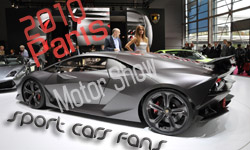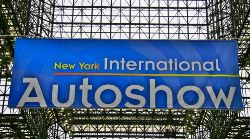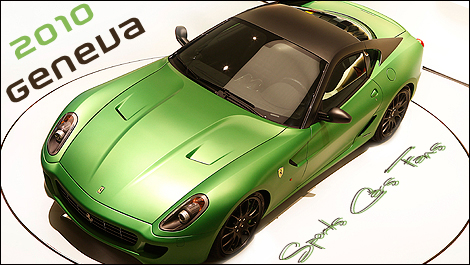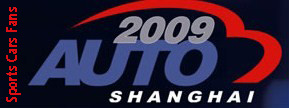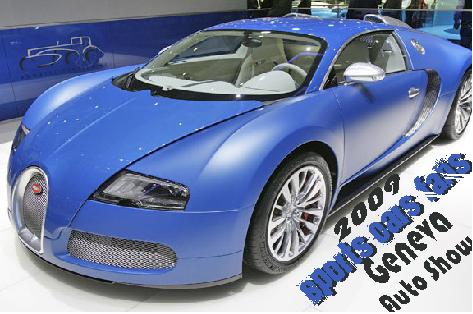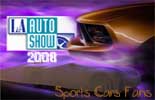2010 Cadillac SRX reborn

Almost exactly a year after revealing the Provoq Concept, Cadillac is debuting the redesigned 2010 SRX wearing essentially the same suit of clothes. At that time, the Provoq was thought to be a preview of a new smaller crossover called the BRX, but Cadillac informed us last summer that the "BRX" was actually the all-new SRX.
We'll be seeing the new SRX in production form at the Detroit Auto Show, and while automakers often throw the term "all-new" around, in this case it really seems to apply. There is almost nothing carried over to this version of the SRX compared to the old one, although many of the greasy bits are shared with other GM vehicles. The biggest difference going from the Provoq concept to the production SRX is the powertrain. The Provoq used a Volt based E-Flex powertrain with a fuel cell range extender. The SRX is a far more conventional though fully modern luxury crossover.
When introducing the new SRX, Cadillac VP Mark McNabb stated, "Design is an initial product differentiator." Design is after all the first thing people notice about a new vehicle. Of course, a great design doesn't gaurantee a good vehicle awaits under the skin, but a bad design may result in people never discovering if the vehicle is any good at all. The new SRX takes the latest iteration of Cadillac's much lauded design language and applies it to a crossover that has a more aggressive SUV-like look than the wagon-shaped first generation SRX.
The most obvious visual difference between the Provoq and SRX is the grille. The "fuel cell powered" Provoq had thermostatically controlled shutters in the grille that were meant to open and close depending on the powertrain's cooling demands. The production SRX reverts to a more conventional setup similar to that of the current CTS and STS. The LED fog-lights in the lower front corners have also been replaced by more conventional looking units.



One interesting detail that Cadillac design chief Clay Dean pointed out on the SRX is its new three-dimensional wreath and crest logo. The elements in the crest have been layered at different depths to give it more presence. The logo is part of the whole aesthetic that consists of "layers of texture" and "vertical and horizontal creases" leading to what Dean dubbed "bold design and drama." Dean also told the gathering that "pure luxury is about genuineness." It remains to be seen how genuine the SRX is, but it certainly looks like a contemporary Cadillac and fits in with the CTS family.
Virtually the only design elements that have changed from the Provoq are the larger side view mirrors, more conventional door handles and tail-pipes that have replaced the water exhaust slots on the Provoq.
On the inside, the concept's design is again carried over virtually unchanged. Some of the shinier metallic trim bits have been replaced by similar satin finish parts on the pre-production example we were shown, while others are now finished in wood. The SRX also gets a similar pop-up navigation screen to the unit in the new CTS. Like the CTS-V, the SRX gets an electronic parking brake that is activated by a switch on the console to the left of the shift lever. The EPB frees up space in the footwell that would otherwise be occupied by a foot activated unit.
One design element that's echoed both inside and out is a longitudinal crease running the length of the body work and center stack. This is a design element that is turning up more and more on luxury vehicles from various manufacturers, including Acura. Dean described it as similar to the crease one finds in a pair of tailored trousers that provides a more upscale look.
When we saw the Provoq and Saab 9-4X concepts that share their platforms at the last Detroit Auto Show, most assumed that both vehicles rode on the same Theta architecture as the similarly sized Saturn Vue and Chevy Equinox. Saab and Cadillac officials, however, repeatedly told us this was incorrect but declined to be more specific. We know now that this premium crossover architecture is actually a blend of components and systems from the Theta platform and new Epsilon II architecture that is used for the Opel Insignia.
The original SRX was based on the same Sigma platform as the CTS, meaning it had rear- or all-wheel-drive configurations. This new Theta-based architecture gets front-wheel-drive for base models and all-wheel drive is optional. The AWD variant uses a Haldex system to apportion drive torque to the rear axle as needed. An electronic limited slip differential distributes the torque based on slip and stability control requirements. The eLSD can send up to 100% of the drive torque to whichever wheel has the most traction or send torque to whichever side is needed to help the vehicle follow the driver's intended trajectory. If all of that sounds familiar, it should. This is essentially the cross-wheel-drive system found on the Saab Turbo-X.
That's not all that the new SRX gets from the sporting Saab. The SRX also gets a choice of two V6 engines, both derivatives of the high feature V6 family that has been available here in 3.6L form for several years. The new base engine is a 3.0L version with direct injection that will be installed in several GM platforms this year, including the Chevy Equinox. In the Cadillac, the 3.0L is rated at 260 hp (5 hp more than the Chevy CUV) and 221 lb-ft of torque. The 3.0L essentially matches the power of the older port-injected 3.6L, although it falls short on torque compared to the 254 lb-ft of the larger engine.
Those craving more torque will want the optional engine, a 2.8L V6 with a turbocharger putting out 300 hp and 295 lb-ft of torque. This is essentially the same engine from the Saab Turbo-X and the first turbocharged engine ever offered in a North American market Cadillac. Both engines are mated to separate 6-speed automatic transmissions. The 3.0L is paired wih the same 6T70 unit used with the 3.6L in other GM products, while the 2.8L is bolted to an Aisin Warner unit.

The body of the new SRX is independently suspended at all four corners with struts in the front and a multi-link layout in the rear, while the dampers also have real-time variable rate control. Tractive and cornering forces are applied with either 18-inch or 20-inch wheels and tires. The front-wheel-drive version weighs in at relatively porky 4,300 lbs and all-wheel drive adds about 150 lbs.
The SRX will be offered at launch in front- or all-wheel-drive with conventional drive-trains only. However, chief engineer Lyndon Schnieder told us that "there is no architectural reason the Two-Mode hybrid won't fit." Since the SRX is aimed directly at the Lexus RX350 and Toyota also offers the hybrid RX450h, this would seem to be a logical next step. Since Cadillacs already command a price premium, the extra cost of the hybrid would be more palatable.
We won't know for several more months how the driving experience of the new 2010 Cadillac SRX compares to competitors like the Lexus RX or Acura MDX. The latter should provide an interesting comparison with its Super Handling-All Wheel Drive pitted against the Haldex system in the Cadillac. One thing is certain, the SRX is a far more attractive and well proportioned piece than its predecessor and easily better looking than the rather bland looking new RX.
PRESS RELEASE
2010 CADILLAC SRX: A DISTINCTIVE ALTERNATIVE FOR TODAY'S LUXURY CROSSOVER CONSUMER
DETROIT – Cadillac unveiled the next-generation 2010 SRX Crossover today, featuring a completely new design and more-efficient, high-technology engine choices. The new SRX is a mid-size luxury crossover coming to the North American International Auto Show next week.
"The all-new SRX is a fresh and compelling crossover aimed squarely at the priorities of luxury buyers," said Mark McNabb, North America vice president, Cadillac/Premium Channel. "With new technologies for increased efficiency and safety, the redesigned 2010 SRX Crossover focuses on both the emotional and pragmatic sides of the luxury consumer."
The 2010 SRX is designed for efficient performance, including the choice of two high-tech six-cylinder engines that are new to Cadillac – the smallest-displacement engines it offers in North America. A new, 3.0L direct injected V-6 engine is standard and a new, 2.8L turbocharged V-6 is optional. Both engines employ technology that helps produce strong performance that is typical of larger-displacement engines. Direct injection enables a 25-percent reduction in hydrocarbon emissions. Fuel economy in the mid-20s on the highway is expected, but testing isn't complete.
Performance and safety are enhanced by an available all-wheel-drive (AWD) system that is designed to optimize vehicle handling and stability in all driving conditions. The AWD system includes an advanced electronic limited-slip differential (eLSD) that distributes torque as needed from side to side along the rear axle, as well as from the front to rear axle. The pre-emptive, active-on-demand system provides an extra measure of capability in wet or icy conditions.
The 2010 SRX rides on a wide track that was designed to deliver a nimble, responsive driving experience. It seats five, with generous occupant and cargo room, and can tow up to 3,500 pounds (1,587 kg).
Distinctive design and craftsmanship
"Cadillac is known for bold design. The 2010 SRX Crossover builds on that reputation," said Clay Dean, Cadillac global design director. "As with the 2008 CTS, we advanced our Art and Science design to create a crossover for style-conscious customers. The exterior features a dramatic diving gesture on the body side to impart the feeling of movement, even at rest."
A multi-piece shield grille and Cadillac's iconic vertical headlamps – with light pipe technology and available adaptive forward lighting – are the face of the SRX. They blend into a tightly wrapped, sweeping body that tapers downward at the rear, giving the vehicle a sporty profile, Dean said.
The SRX features a wide stance, minimal overhang and wheels pushed to corners. Eighteen-inch wheels are standard and 20-inch wheels are offered. A bold accent line dives across the body side and culminates at a chrome front fender vent that incorporates a side marker lamp. An integrated spoiler on the rearward edge of the roof extends the sleek lines and improves aerodynamics.
"Inside the new SRX, technical precision blends with old-world craftsmanship," Dean said. "Hand-cut-and-sewn coverings on the instrument panel and ambient lighting details convey a finely tailored cabin."
An integrated center stack houses controls for climate and audio systems, while the navigation system rises from the center of the instrument panel. A signature example of the SRX's attention to detail is the Cadillac script logos in the front door sill plates that illuminate when the doors are opened.
Advanced technology and entertainment systems
The 2010 SRX features numerous advanced electronic systems. Highlights include a "pop-up" navigation screen with three-dimensional imaging; adaptive forward lighting that swivels the headlamps in synch with vehicle steering; power liftgate with adjustable height setting; integrated hard disc drive for audio storage and a dual-screen system for rear entertainment.
Bluetooth compatibility is standard, as is OnStar's turn-by-turn navigation service for buyers who do not select the car's navigation system option.
Efficient performance
The SRX is powered by a new, fuel-efficient direct injected 3.0L V-6 that delivers an estimated 260 horsepower (193 kW) and is paired with a six-speed automatic transmission. Direct injection results in more power, better fuel economy and lower emissions, all will a smaller-displacement package. As a result, the new V-6 engine is expected to raise the SRX's standard power rating by 5 horsepower, while achieving an estimated 1 0-15-percent fuel economy improvement.
The 3.0L direct injection V-6 is a smaller-displacement version of the 3.6L, direct injection engine featured in the CTS sport sedan and named one of the world's 10 Best Engines for 2009 by Ward's Automotive. Along with direct injection technology, the 3.0L engine employs variable valve timing to optimize power and fuel efficiency and reduce emissions.
The Hydra-Matic 6T70 six-speed automatic transmission helps save fuel by lowering the engine's rpm at constant highway speeds, while manual shift control enables greater driver interaction when desired. The new SRX includes a driver-selectable "eco mode" that alters transmission shift points to maximize fuel economy.
"The 2010 SRX will deliver excellent, balanced driving dynamics in all types of weather," said Bob Reuter, global vehicle chief engineer. "The all-wheel-drive system with electronic limited slip effectively transfers torque not only from front to rear, but also along the rear axle. This system sets a new benchmark for all all-wheel-drive systems, giving the driver control and confidence on any road surface."
Traction control is taken a step further on AWD models with the rear eLSD. In icy or wet conditions, the system can transfer up to 100 percent of torque to the wheel that has more grip. The eLSD also gives the driver enhanced control when cornering hard or completing a high-speed maneuver, such as a lane change, by momentarily applying more or less torque to either of the wheels to help the rear of the vehicle more closely follow the direction of the front wheels.
The suspension includes a real-time damping system in conjunction with AWD that adjusts shock damping rates in response to road conditions for a smooth ride quality.
Enhanced safety
SRX's safety features are designed to protect occupants before, during and after a crash. A strong body structure and chassis that absorbs crash energy is complemented by the use of martensitic steel in the fully enclosed rocker sections. Martensitic steel is one of the strongest available and its use in the rockers helps protect against intrusion during a side-impact crash, while also maintaining the structure during front and rear crashes.
Additional safety features include standard head curtain side air bags, standard front seat-mounted pelvic/thorax side air bags, front safety belts with dual pretensioners and load limiters, rollover mitigation sensors, a pedal release system, trailer stability assist and OnStar.
The SRX was also designed to meet European pedestrian protection standards; and the front bumper is positioned for greater compatibility with car bumpers.
Production begins in the second quarter of 2009, with dealer availability shortly thereafter.
PRELIMINARY SPECIFICATIONS
Models:
2010 Cadillac SRX
Body style / driveline:
five-door, 5-passenger front engine transaxle; front-wheel-drive/all-wheel-drive mid-luxury crossover vehicle
Construction:
steel body frame integral; galvanized steel front fenders, hood, roof, door panels, one-piece bodyside outer panel, and liftgate
EPA vehicle class:
sport utility vehicle
Manufacturing location:
Ramos Arizpe, Mexico
Key competitors:
Lexus RX; Acura MDX; BWW X3 and X5
Engines
3.0L DOHC V-6 direct injection, variable valve timing, four valves per cylinder
2.8L DOHC Turbo V-6, four valves per cylinder
Displacement (cu in / cc):
182 cu in / 2986 cc
170 cu in / 2792 cc
Bore x stroke (in / mm):
3.50 x 3.16 in / 89 x 80.3
3.50 x 2.94 in / 89 x 74.8
Block material: aluminum
Cylinder head material: aluminum
Valvetrain: DOHC, 4 valves per cylinder
Ignition system:
coil-near-plug
pencil Coil
Fuel Delivery:
high-pressure direct injection
PFI returnless
Compression ratio:
11.7:1
9.5:1
Horsepower (hp / kw @ rpm):
260 / 193 @ 6950 (est)
300 / 224 @ 5500 (est)
Torque (lb-ft / Nm @ rpm):
221 / 300 @ 5600 (est)
295 / 400 @ 1850 (est)
Recommended fuel:
regular unleaded; E85 capable
premium unleaded
Max engine speed (fuel cut-off):
7100
6500
Emissions Controls:
dual close-coupled catalysts and single underfloor catalyst; variable valve timing, evaporative system
dual close-coupled catalysts
Fuel economy (city / hwy)
TBD
TBD
Transmissions
6T70 Hydra-Matic six-speed transverse, electronically controlled, automatic overdrive transmission
AF40 Aisin Warner six-speed transverse, electronically controlled, automatic overdrive transmission
Chassis and Suspension
Front suspension:
independent, strut-type, specifically tuned coil springs, direct-acting stabilizer bar (hollow); hydraulic ride bushings
Rear suspension:
linked H-arm, hollow stabilizer bar; real-time damping available
Traction control:
all-speed using engine torque reduction and brake intervention
Steering type:
specifically calibrated hydraulic-power-assisted rack-and-pinion for V-6 models
Steering wheel turns, lock-to-lock
2.84
Turning circle, curb-to-curb (ft / M):
40.3 / 12.2
Steering ratio:
16.5:1
Brakes
Four-wheel power-asssited disc with ABS (and ESC); vented front and rear rotors; aluminum calipers front and rear (two-piston front calipers, single-piston rear calipers)
Brake rotor diameter – front (in / mm):
13.6 / 345 x 1.2 / 30
Brake rotor diameter – rear (in / mm):
12.4 / 315 x 0.9 / 23
Total swept area (cu cc):
front: 179.4
rear: 72
Wheels and Tires
Wheel size and type:
18-inch aluminum (std on all models)
20-inch aluminum (opt on all models)
Tires:
P235/65R18 AL3
P235/55R20 AL3 or 235/55R20 HW4
Exterior Dimensions
Overall length (in / mm): 190.2 / 4833
Overall width (in / mm): 75.1 / 1910
Overall height (in / mm): 65.6 / 1668
Wheelbase (in / mm): 110.5 / 2807
Front track (in / mm): 64.0 / 1626
Rear track (in / mm): 63.7 / 1620
Interior Dimensions
Seating Capacity (front / rear): 2 / 3
Headroom (in / mm):
front: 39.7 / 1009
rear: 38.4 / 976
Legroom (in / mm):
front: 41.2 / 1047
rear: 36.3 / 923
Shoulder room (in / mm):
front: 58.3 / 1481
rear: 56.2 / 1430
Hip room (in / mm):
front: 55.4 / 1408
rear: 54.7 / 1391
EPA passenger volume (cu ft / L) : 100.6 / 2848.6
EPA interior volume (cu ft / L): 129.8 / 3675.5
Cargo volume behind first-row seats (cu ft / L): 61.18 / 1732.4
Cargo volume behind second-row seats (cu ft / L): 29.20 / 826.8
Capacities
Trailer towing maximum (lb / kg):
3.0L: 2500 / 1136 (without towing package)
3.0L: 3500 / 1590 (with towing package)
2.8L: 3500 / 1590 (with towing package)
Maximum tongue weight (lb / kg): 350 / 158
Fuel tank (gal / L): 21 / 79.5
Cooling system (qt / L):
3.0L: 12.4 /11.7
2.8L: 12.6 /11.9
